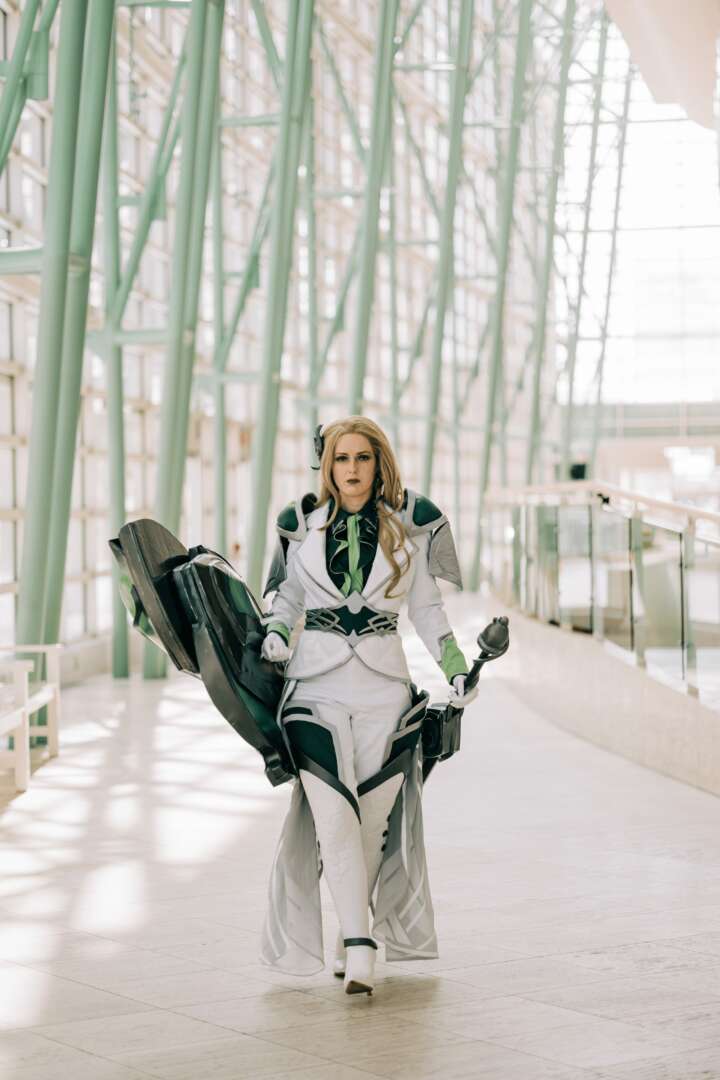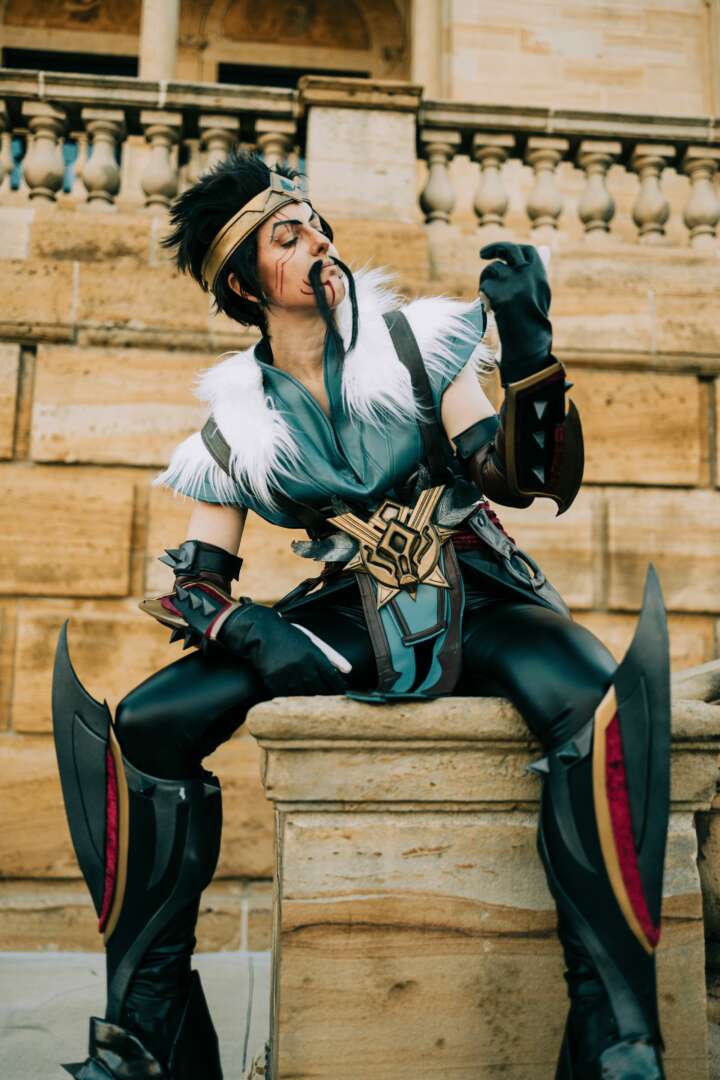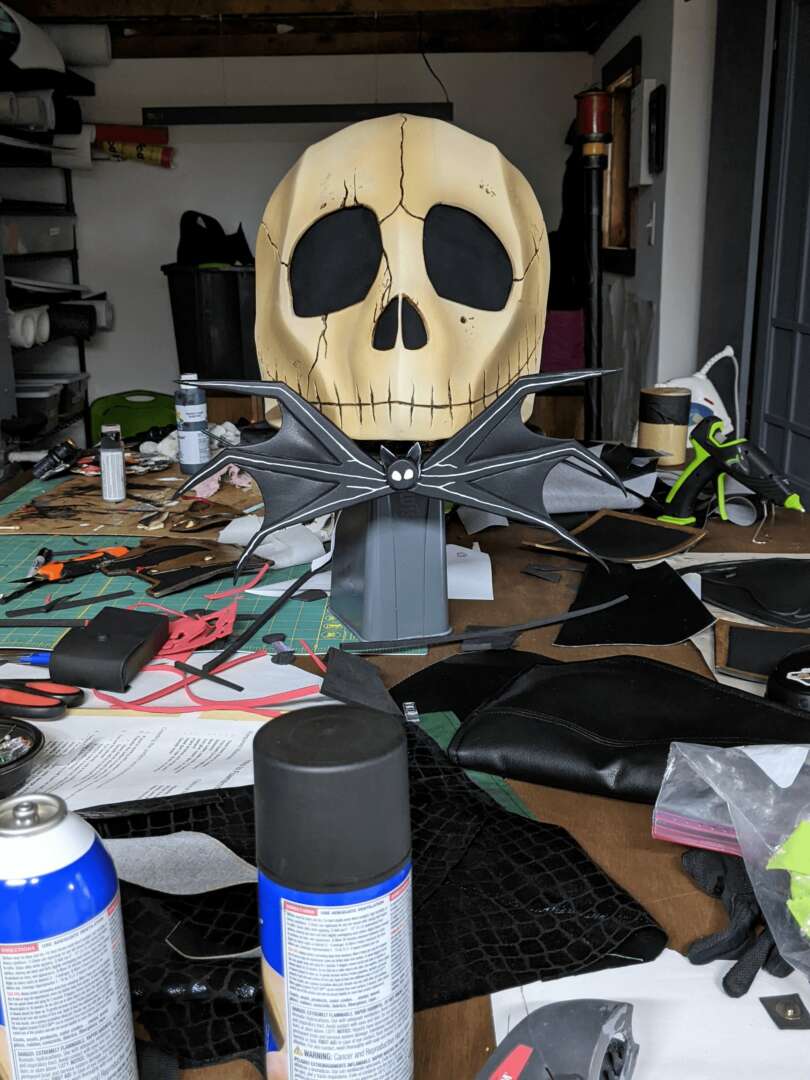We’re excited to introduce you to the always interesting and insightful Annye Driscoll. We hope you’ll enjoy our conversation with Annye below.
Annye, thanks for taking the time to share your stories with us today What’s been the most meaningful project you’ve worked on?
Many cosplayers are queer. Generally, we’re a young, inclusive, and colorful bunch, so “misfits” of all kinds find their nerdy homes with us costumers and creators. But cosplay also features a special sort of support for queer artists: its potential to play with gender. In 2019 I was living as a cis woman and cosplaying women too – although several of those characters, in retrospect, were already toeing the gender line.
(I thought for a while I’d specialize in genderbends: taking male characters and imagining them as female. Then I cosplayed my female World of Warcraft character, who wears a full set of armor and a helmet covering her entire face. People thought I was a man or hemmed and hawed about what pronouns to use for me. It was marvelous! It should have been a clue…)
But then, between projects and waiting for the next character to make herself known, a new cinematic was released for a favorite game of mine and oh no… am I going to cosplay a man?? I kept my plans secret for a while, even from my partner and friends. This character is very stereotypically masculine and even has long flowing mustaches (which, by the way, I ended up hand-sewing!). But eventually it got out that I was making my first male cosplay, and I spent a whole summer lifting weights in order to become the size of a large man (…I did not become the size of a large man), and y’all… I killed that costume. I felt great, the craftsmanship was a huge level up for me, and I was even a finalist for the game company’s cosplay contest with the creation.
And, of course, I learned about my own gender and queerness, just a little. I didn’t want to just cosplay women anymore, but I didn’t want to BE the men I was cosplaying either. I enjoyed putting the gender on like a costume – whether that gender be hypermasculine or a twirly dress.
It took me a couple years to finally label those feelings as “nonbinary”. But that first male cosplay character in 2019 was an important step in my queer discovery – and one I’m still very proud of, five more years into my artistic journey.

As always, we appreciate you sharing your insights and we’ve got a few more questions for you, but before we get to all of that can you take a minute to introduce yourself and give our readers some of your back background and context?
I am a cosplayer, maker, and author. As a cosplayer – someone who wears costumes, most commonly from TV, movies, video games, and comic books, for fun – I focus on the craftsmanship and creative aspects of the hobby. This is not true for everyone; some cosplayers purchase their costumes and prefer to spend their hobby time roleplaying, for example. But for me, cosplay is an artistic outlet above all else. In 2015 I was a few years out of college and working in a cubicle writing software. I desperately needed an artistic outlet that did NOT include a keyboard.
One of my favorite aspects of cosplay is that there’s always something new to learn. Need a break from sewing? Take a deep dive into foamsmithing (making props and armor from EVA foam, the material yoga mats are made of). Your costume have some cool gems, or a knit piece, or actual chainmail? Sounds like it’s time to learn resin casting, knitting, and mail making! For a lifelong learning (and hobby-acquirer), cosplay is a dream artform.
Even today, though, cosplay isn’t my first hobby love – that’d be reading. I’ve been a bookworm my whole life. I devour stories and am a library power user. So when I earned the opportunity to write and publish a cosplay book – A REAL BOOK! – I jumped on (and cried over) the immense honor. In 2024 C&T Publishing released my first book, The Ultimate Glue Guide: Adhesives for Cosplay, Crafts, and More. Creating a book was a pleasure and a dream come true, and – I can’t say more! – but there will be even bigger and better books to come.

Let’s talk about resilience next – do you have a story you can share with us?
Being a cosplayer – especially a competitive one – absolutely requires resilience. I often need to make a piece (armor, a prop, a detail for a gown, etc) several times to achieve the level of perfection (and cuteness!) needed for high-level competition. Not all cosplayers are competitive, but those who are (like me!) have to have patience and mental fortitude in order to push through tough pieces and learning processes.
It’s a tough hobby, too, because our own bodies are the canvases upon which we’re practicing artwork. I was not a particularly fashionable young person, and didn’t spend much time worrying about – or, more importantly, practicing, makeup application. My skills in sewing and armorsmithing progressed much faster than my skills at blending eyeshadow or applying falsies. Consequentially, I had some devastating first try-ons, where my costume – so cute when on the hanger or mannequin! – fell disastrously flat when paired with my baby makeup attempts.
And of course makeup isn’t the only body issue we cosplayers face; it’s just the one I ran into first. Costuming is a constant lesson in self-acceptance and body positivity. If we want to love what we’re making to put on our bodies, we have to at least accept the body itself. Now that’s resilience.

What can society do to ensure an environment that’s helpful to artists and creatives?
It may be a copout answer, but I believe all artists should be paid for their work. It’s sadly common for cons and showrunners to hire cosplayers “for exposure”, but we’re artists, actors, and creators and should be compensated – with food, hotel rooms, and (ideally!) money.
I love cosplay and I love creating. But it costs money not only to make my costumes, but also to get those costumes to shows. If I’m contributing to that show – whether by judging a contest, emceeing entertainment, or otherwise providing content on the show’s behalf, I want to get paid and I want other cosplayers to get paid, too.
Contact Info:
- Website: https://makerfishmeal.com
- Instagram: https://www.instagram.com/makerfishmeal/
- Facebook: https://www.facebook.com/makerfishmeal
- Youtube: https://www.youtube.com/channel/UCcQAE2Xbg2ZttUhawZJh8Cg



Image Credits
In-cosplay photos by @cinnamonandbirch


